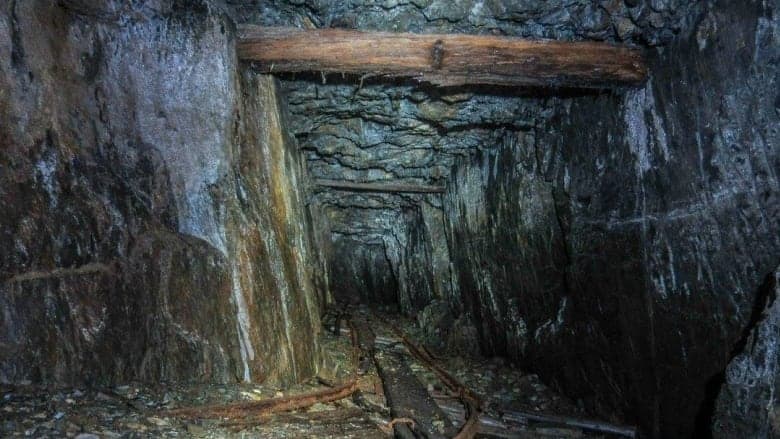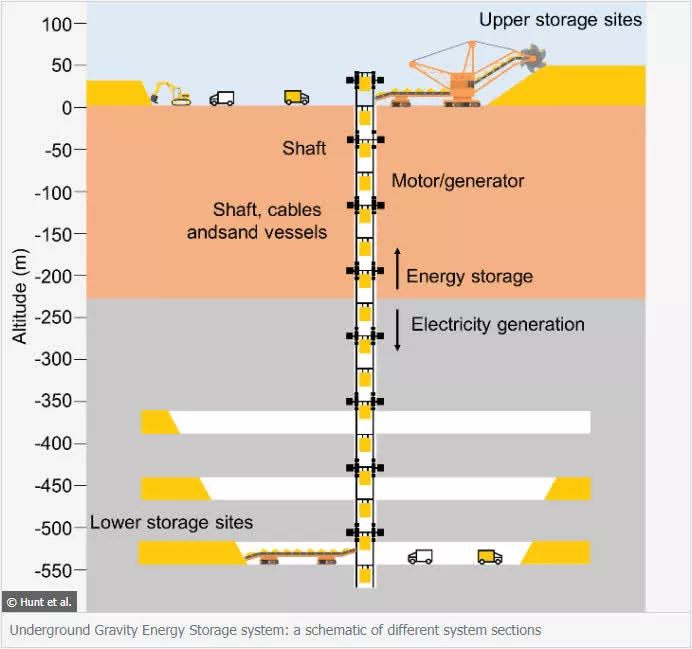
As the world increasingly turns to renewable energy sources like wind and solar, the challenge of storing excess energy becomes increasingly pressing. But a new study from the International Institute for Applied Systems Analysis (IIASA) in Australia suggests that an unlikely solution may be hiding in plain sight: abandoned mines.
According to the study, decommissioned mines could be repurposed to operate as “gravity batteries.” The idea is simple: excess energy is used to lift heavy objects, like sand, up into the mine. When energy is needed again, the weight is dropped, spinning a turbine and converting the kinetic energy from gravity back into electricity.
This electricity can then be used when demands on the grid are high, and at other times, when there is excess energy in the grid, the gravity battery system uses some of that energy to pull the load back up, storing the energy for later use.
Storing energy through gravity
One of the key advantages of this method is that it doesn’t suffer from the same self-discharge issues that traditional batteries do. The energy is stored in the gravitational potential of the weight itself, rather than in a chemical-based battery that can lose its charge over time.
One of the most common gravitational energy technologies is represented by pumped-storage hydroelectric systems, where water is released from a high elevation, generating electricity through the spinning of turbines as it flows downhill. When there is excess energy, the water is pumped back up to the top.
But the real appeal of the idea is that there are already millions of abandoned mines around the world that could be relatively cheaply converted for this purpose. Most contain the basic required infrastructure and are already connected to the power grid.
“When a mine closes, it lays off thousands of workers. This devastates communities that rely only on the mine for their economic output. UGES would create a few vacancies as the mine would provide energy storage services after it stops operations,” says Julian Hunt, a researcher in the IIASA Energy, Climate, and Environment Program and the lead author of the study. “Mines already have the basic infrastructure and are connected to the power grid, which significantly reduces the cost and facilitates the implementation of UGES plants.”

The IIASA researchers have proposed a novel type of gravity battery, known as Underground Gravity Energy Storage (UGES), that utilizes elevators in existing decommissioned mine shafts and raises and lowers containers full of sand. Electric motor and generator units on both sides of the shaft move the elevator up and down, generating electricity via regenerative braking on the way down and using some of that electricity on the way back up.
The IIASA estimates that it would cost roughly $1-10 per kilowatt-hour to convert a mine, and a further $2,000 per kilowatt of power capacity. But the potential payoff is huge: the researchers believe that their method could have a global potential of 7 to 70 terawatt-hours, with most of this potential concentrated in China, India, Russia, and the USA — the countries with the most abandoned mines. To put that into perspective, global energy consumption for 2021 was about 25 terawatt-hours.
But the benefits of repurposing abandoned mines for energy storage don’t stop there. The researchers also believe that operating gravity batteries in these mines could restore or preserve some of the jobs lost when the mines closed.
It’s an idea that’s still in the early stages of research and development, but it’s one that could have a huge impact on the future of renewable energy storage. The next step is to investigate the feasibility of the idea on a larger scale, but the IIASA’s study suggests that abandoned mines could be a cost-effective solution that may also provide jobs.
“To decarbonize the economy, we need to rethink the energy system based on innovative solutions using existing resources. Turning abandoned mines into energy storage is one example of many solutions that exist around us, and we only need to change the way we deploy them,” concludes Behnam Zakeri, study coauthor and a researcher in the IIASA Energy, Climate, and Environment Program.
The findings appeared in the journal Energies.
Was this helpful?



